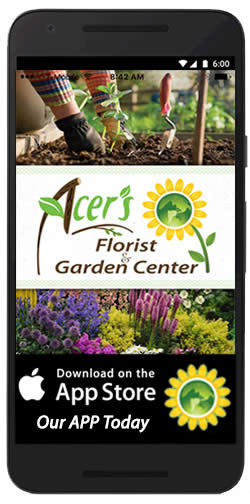
By Tamara Galbraith
So, the weekend comes, you've got a Gardening To-Do List as long as your arm...and the weather is miserable. Fortunately for gardeners, there's always a side project waiting--or an inside chore that needs doing. Here are ten ways to pass the time if you can't spend it outside gardening:
1. Clean your tools:
First, use a stiff brush to remove excess dirt, then scrub off rust with steel wool. Spray or wipe on a lubricating oil before storing in a dry area.
2. Clean your pots:
If you're like me, your garage and patio are littered with empty plant pots of varying sizes. Dump the excess dirt into the compost pile and rinse with water. If you suspect fungal disease was present in the pot, throw away the dirt, use a mild bleach solution to scrub the pot thoroughly with a stiff brush, and allow to air dry. Arrange and stack pots according to size, and store.
3. Tend to your houseplants:
Repot where necessary. Polish large leaved-plants with a soft cloth soaked in a mild solution of water and stale beer. If you want leaves to really shine, use a commercial plant-polishing product. However, waxes and oils tend to block plant pores and attract dust, so watch out for those.
4. Clean out old gardening products:
Determine which pesticides, fungicides, fertilizers, etc., are ready to be thrown out. (Most will last about two years.) Check with your local solid waste management authority, environmental agency, or health department to find out whether your community has a household hazardous waste collection program or a similar program for getting rid of unwanted, leftover pesticides. Whatever you do, please DON'T pour products--even organic ones--down the sink, into the toilet, or down a sewer or street drain. And don't re-use empty containers--just throw them away.
5. Go through your seeds:
Seeds more than two years old should probably be thrown away. If you're not sure, test their viability by folding a few seeds in a wet paper towel and laying the towel someplace warm for a few days, ensuring it remains damp. If the seeds germinate, they're obviously still ok. The best way to store seeds is in screw-lid jars or in zip-top plastic baggies.
6. Start a scrapbook:
Go through old gardening magazines and cut out favorite pictures, articles, growing tips, etc.; then organize them and paste in a scrapbook. This can actually be a winter-long project if you've got stacks and stacks of gardening magazines--as I do.
7. Learn something new:
Interested in trying bonsai but not sure where to start? Want to learn the basics of designing an attractive container arrangement? Get on the Internet and do some searching. There's a world of resources out there.
8. Pamper your orchids:
Got orchids? You should decrease the amount of water given to orchids (and all indoor plants, actually) during the winter months, but before you help them shut down for the season, make sure the sphagnum moss and other rooting medium is still fresh. Roots should be white or green and not brown and soggy. If you're getting root rot, change the moss out and trim off bad roots.
9. Start a garden journal:
Keeping records of what works and what doesn't is invaluable in gardening. Taking pictures of your landscape throughout the seasons is also helpful in determining how to tweak here and there.
10. Visit us:
Hop in the car and come visit us. Treat yourself to new houseplants or some new gardening tools. You've worked hard all summer and fall, so you deserve it!
Click to print this article.













